Leaves Coloring Pages
Leaves are one of the most familiar parts of nature. They change with the seasons, come in many shapes, and play a central role in plant life. Coloring leaf pages is a simple way to connect with nature while building skills in art, science, and mindfulness.
This page offers free printable leaves coloring pages, including maple, birch, magnolia, monstera, and fern. Each PDF is easy to download and ready for classrooms, family activities, or personal relaxation.
Leaf Designs You Can Print
Here is what you will find in this collection:
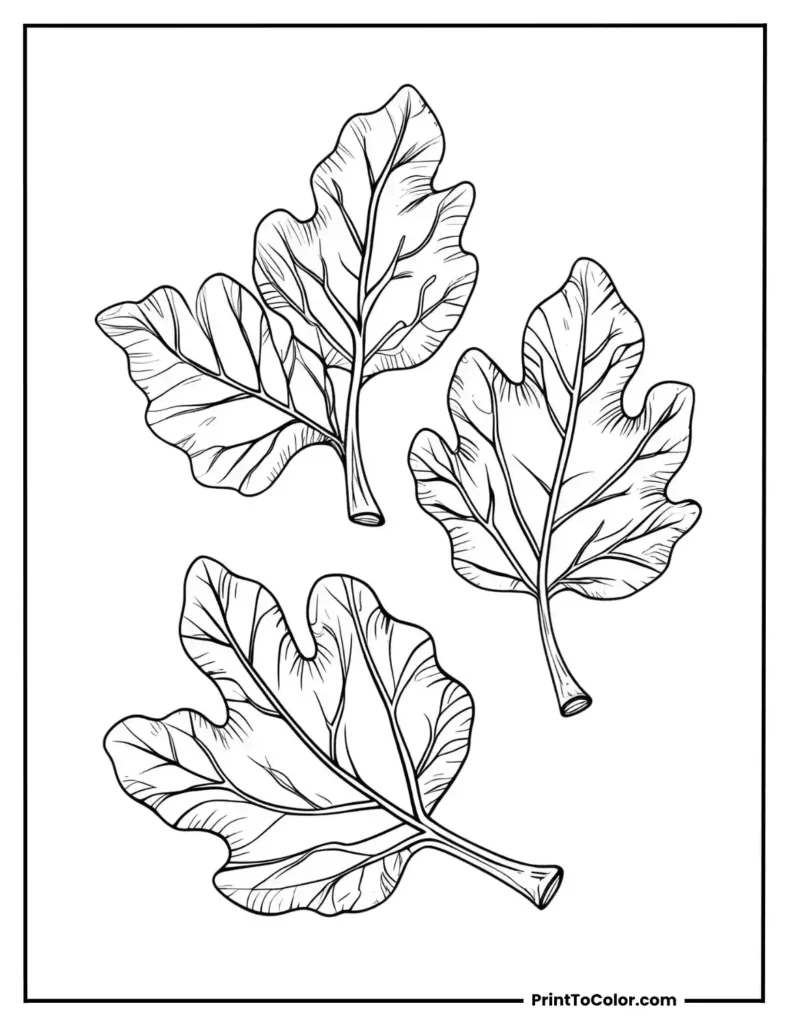
Three crunchy-looking leaves with curled tips
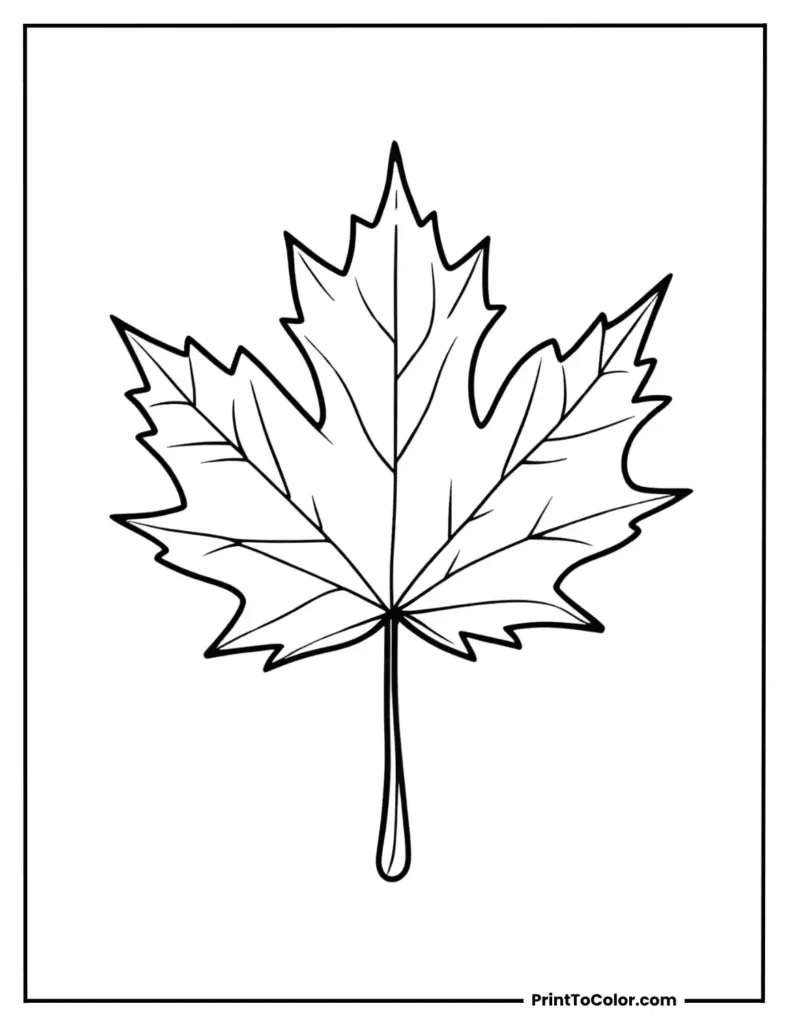
Single maple leaf
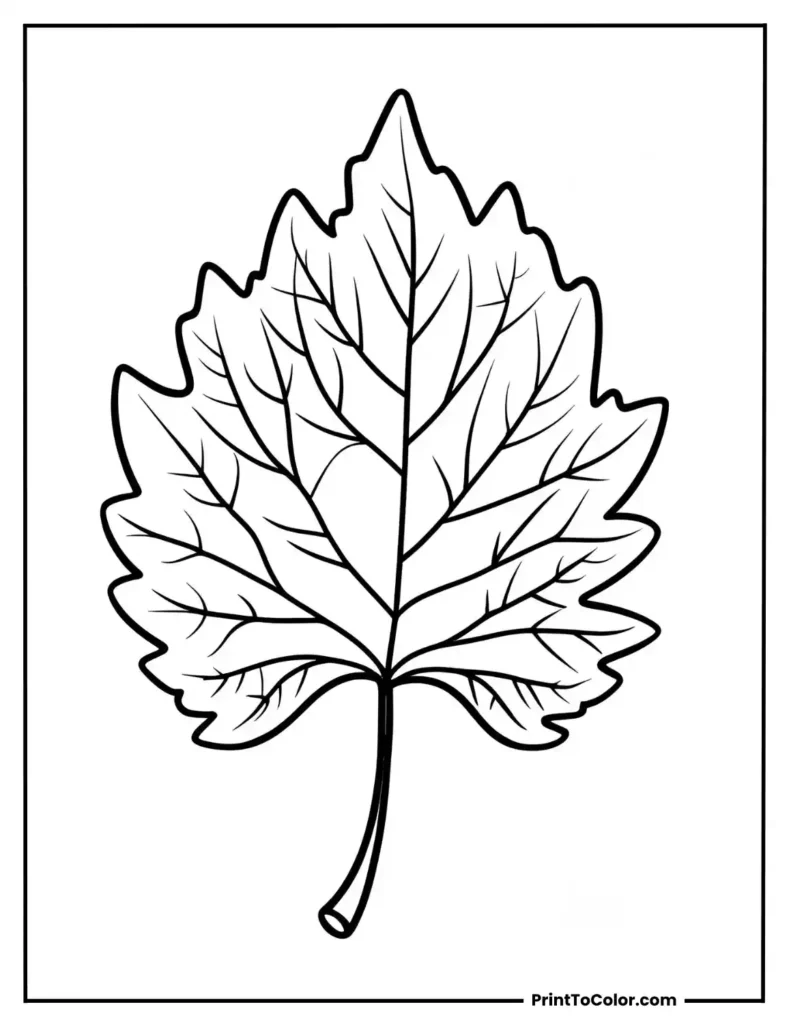
Single large leaf with autumn-style curling edges
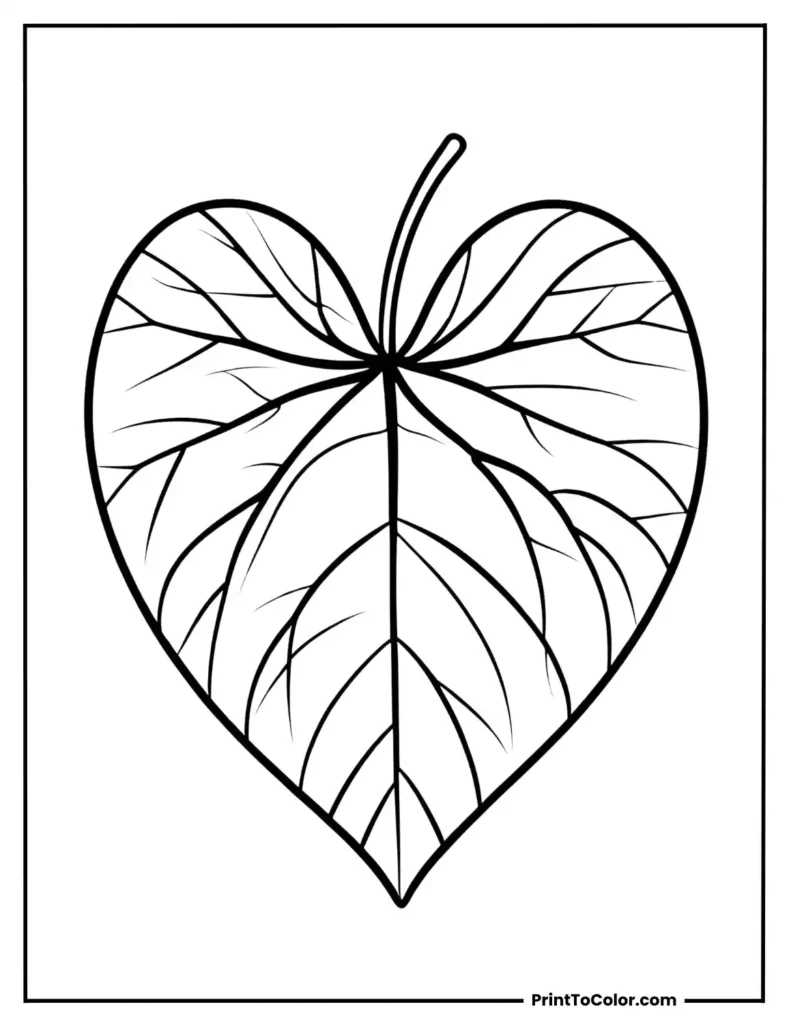
Single heart-shaped leaf with veins
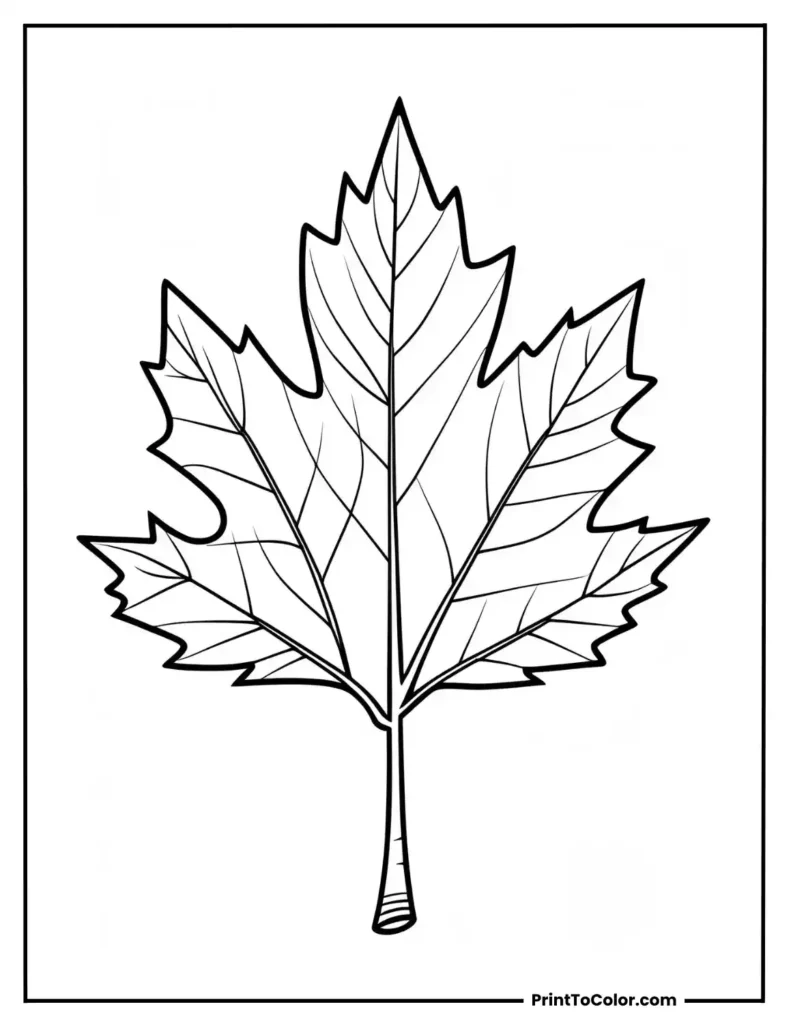
Leaves crossing at the stem
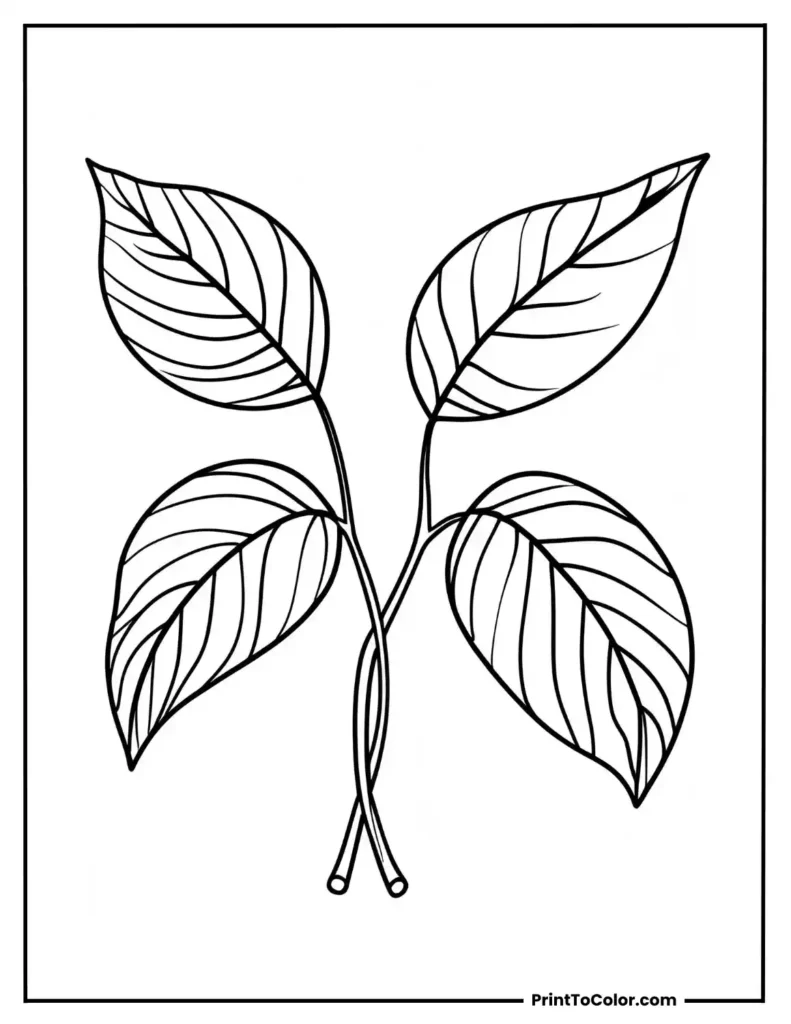
Leaves crossing at the stem
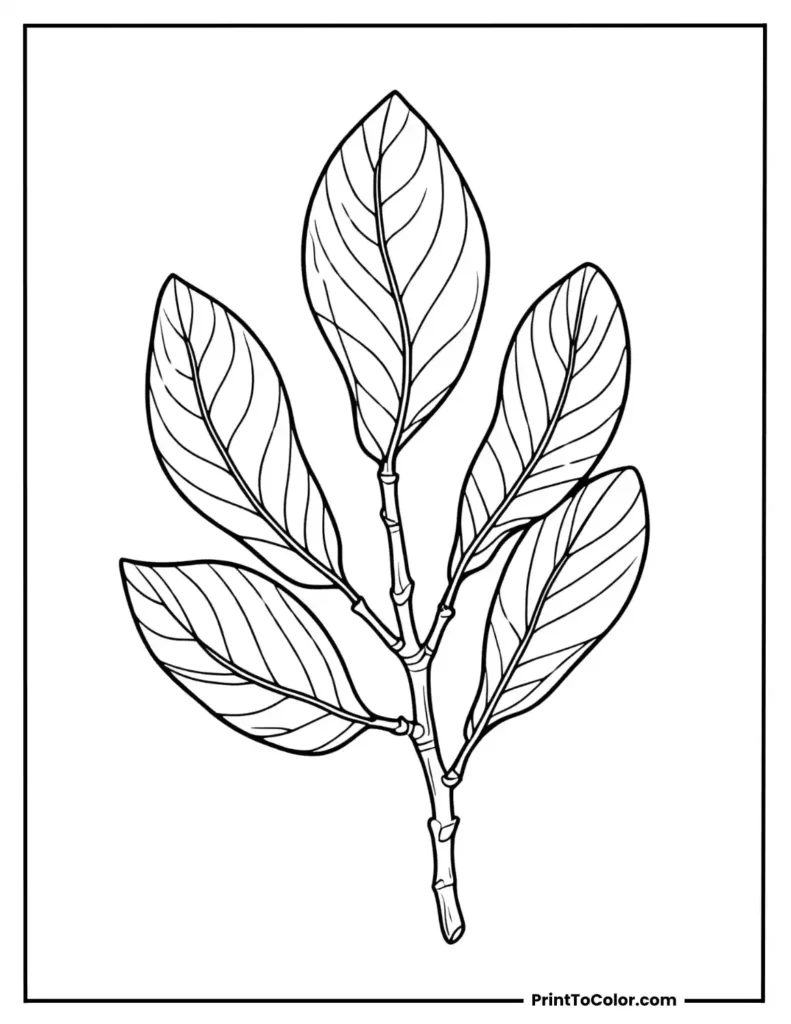
Magnolia leaf with visible midrib and veins

Fern leaf with long arching stem
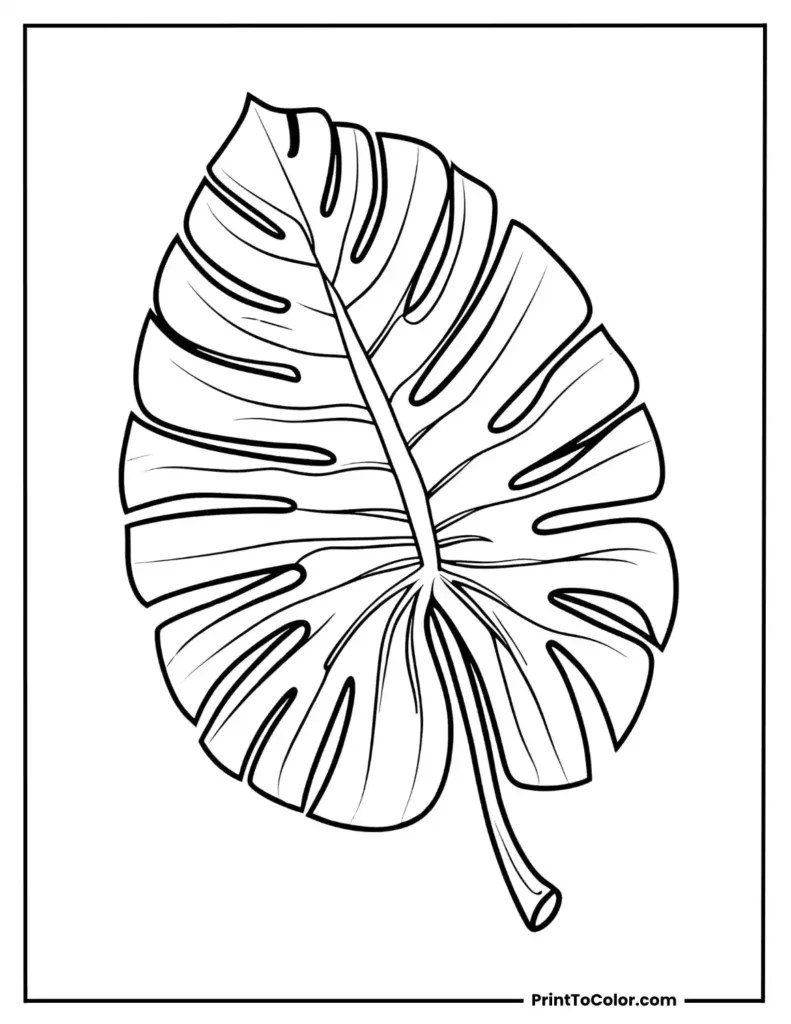
Large tropical monstera leaf

A simple palm tree leaf
You might also like to explore these related coloring pages
Educational Uses of Leaves Coloring Pages
Leaf coloring pages can support learning in many ways. Here is how they connect to science and classroom lessons:
Plant anatomy
A leaf is more than just a flat green surface. Children can learn about the blade (the broad part of the leaf), the midrib (the central vein), and the petiole (the stalk that attaches the leaf to the stem). Veins carry water and nutrients through xylem and phloem, which are the plant’s transport tissues. Coloring pages that label these parts help students see how structure supports function.
Photosynthesis
Leaves are the main site of photosynthesis, the process where plants use sunlight, water, and carbon dioxide to make food. Inside the leaf, mesophyll cells are packed with chloroplasts, which contain chlorophyll. Coloring activities can be paired with lessons on how chlorophyll absorbs light energy and how stomata (tiny pores) allow gas exchange.
Seasonal changes
In autumn, many trees stop producing chlorophyll. As the green pigment fades, other pigments become visible: carotenoids (yellow and orange) and anthocyanins (red and purple). Coloring maple leaves in fall shades helps children understand why forests change color each year.
Biodiversity
Leaves vary widely across ecosystems. Tropical plants like monstera have large leaves with natural holes that let light filter through dense forests. Temperate trees like birch have smaller, simple leaves adapted to cooler climates. Comparing these designs through coloring helps children see how plants adapt to their environments.
Creative Ways to Use Leaf Coloring Pages
Coloring is just the start. Here are practical and creative ways to use leaf printables:
Fun Leaf Facts for Kids
Here are some engaging facts to share while coloring:
